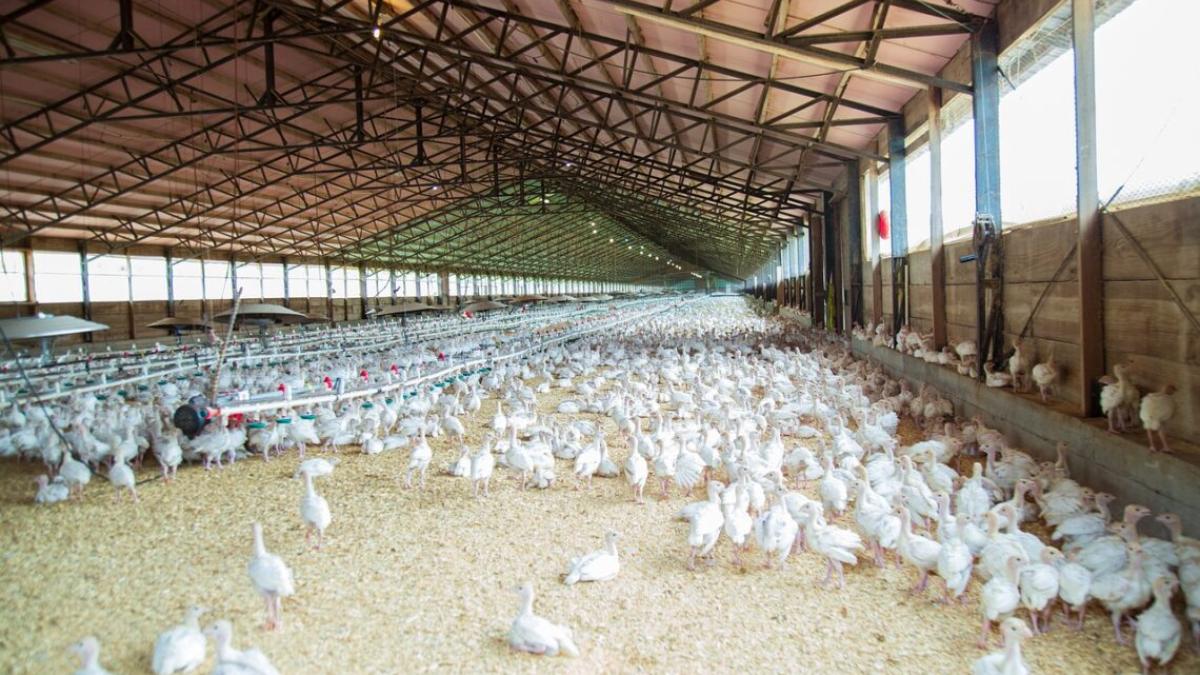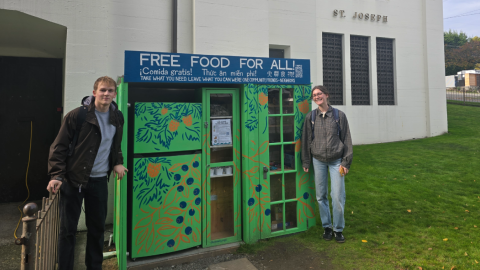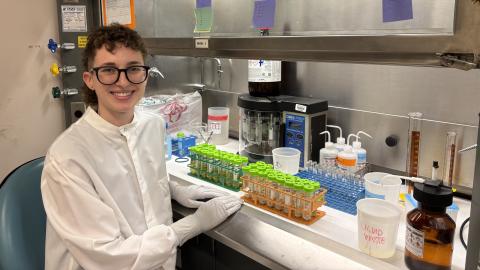Four years ago, as attention locked onto COVID-19, another virus began circling the globe. A major outbreak of a new strain of bird flu — formally named influenza A virus subtype H5N1 — has since killed millions of wild birds and infected poultry, dairy cattle, domestic cats and a small number of humans.
In the United States, four people have contracted the virus. The most recently confirmed case, a dairy worker in Michigan, was the first to experience flu-like respiratory symptoms. For now, federal health officials have deemed the virus a low risk to public health, while launching new studies and monitoring the virus’s spread.
But what exactly are public health officials looking for? How is this virus different from previous H5N1 outbreaks? And how can a bird flu become humanity’s problem, anyway?

UW News brought these questions and more to University of Washington experts Peter Rabinowitz, a professor in the Department of Environmental & Occupational Health Sciences (DEOHS) and in family medicine, and Julianne Meisner, an assistant professor of epidemiology and of global health, and an adjunct assistant professor in DEOHS. They are director and deputy director, respectively, of UW’s Center for One Health Research, which studies the connections between the health of people, animals and our shared environment.
Peter, you recently called the current H5N1 outbreak “unprecedented” for bird flu. What makes this outbreak different, and why is it drawing so much attention from health officials?
Peter Rabinowitz: Thirty years ago, outbreaks of highly pathogenic avian influenza were rare in birds. Beginning around 2003, a deadly strain of H5N1 avian influenza started spreading widely, but mostly impacted domestic poultry. Now this recent strain of H5N1 that has been circulating worldwide for the past two years is unprecedented in its ability to affect mammals.
The H5N1 virus started with birds before “jumping” to dairy cattle and now a handful of humans. How does a virus “jump” between species like that, and what makes certain species vulnerable while others seem to resist the virus?
PR: As they circulate, influenza viruses are continually changing some of their genetic material, acquiring new mutations in a process known as “genetic drift.” Sometimes when two different strains of a virus are present in the same host human (or animal), they can “recombine” to create a quite different strain.
Health officials have said the chances of H5N1 becoming a major threat to humans are minimal, but that they’re monitoring the situation for any changes. What are they looking for?

PR: Health officials are looking for evidence of mammal-to-mammal transmission in non-human mammals, and any evidence of person-to-person transmission, which could be a definite warning about H5N1’s potential to become an epidemic.
The earliest cases of H5N1 in humans were mild — two dairy workers with eye infections — but the most recent case appears to be causing respiratory symptoms. That’s triggered alarm, of course, but what does that say about how the virus is evolving?
Julianne Meisner: The location of symptoms can sometimes — though not always — tell us something about transmission. When symptoms are restricted to just the eye, it’s likely that transmission would require contact with the tissues around or fluids from the eye, similar to how pink eye (conjunctivitis) is transmitted.
When health professionals see respiratory symptoms, we get concerned about transmission through droplets or aerosols. Because breathing is something every one of us needs to do, all of the time, respiratory transmission is incredibly efficient, and difficult to avoid. Also, some respiratory symptoms, such as coughing, can propel virus particles further, increasing the efficiency of transmission.
Much has been made of H5N1 as the next possible pandemic. Should that happen, are there lessons we’ve learned from the COVID-19 pandemic that could help us navigate this one?
PR: Yes, the lessons learned from COVID-19 in terms of rapid development of vaccines and the effectiveness of control measures such as masks would allow us to respond quickly. Unfortunately, everyone is quite tired of hearing about pandemics, so a challenge would be to capitalize on the helpful lessons learned and find a way to avoid misinformation and public backlash to a public health response.
JM: While COVID has been very divisive in many ways, it has also familiarized many people with public health: People now know how to navigate dashboards on the health department’s website, and we have muscle memory regarding social distancing, mask wearing, handwashing, etc. Basic epidemiology principles such as quarantine, isolation, transmission rate, etc. are familiar to the general public now. But there is also a lot of fatigue, as Peter mentions, which may make it harder to implement public health countermeasures if they become necessary.
Adapted from the original post here.
To reach Rabinowitz or Meisner, contact Alden Woods of UW News at acwoods@uw.edu.




